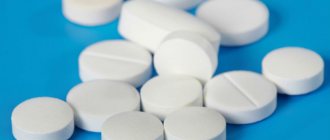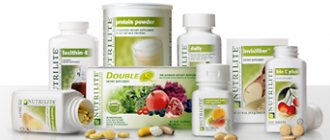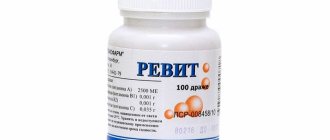Which vitamin D should you choose? Table of drugs and dietary supplements
Vitamin D refers to a group of chemically similar substances (vitamers) with a similar effect on the body. The most commonly found in medications are D2 (ergocalciferol) and D3 (cholecalciferol), since they have greater pharmacological effectiveness compared to others.
NB! There are vitamin D preparations based on its active metabolites calcitriol, alfacalcidol, and provitamin D3 dihydrotachysterol (D4). These are prescription drugs and are used exclusively for therapeutic purposes (for active metabolites, the main indication is the treatment of osteoporosis, for dihydrotachysterol - hypocalcemia against the background of hypoparathyroidism). Combined drugs with calcium are also widely represented on the market and will be the subject of one of the following articles.
D2 (ergocalciferol) is formed from ergosterol in plant cells, yeast, some other fungi and mushrooms under the influence of UV rays.
D3 (cholecalciferol) is found naturally in a variety of animal products. It is synthesized in our body under the influence of UV rays.
Of the two forms, D3 is the more natural compound for our bodies and is better absorbed. D3 is 25% more efficient than D2. The metabolism of ergocalciferol in the body takes longer and is accompanied by the formation of a number of by-products, which means the risk of toxic effects in case of overdose increases.
The time to maintain the concentration of the active metabolite calcitriol in the blood is lower in D2 [1, 2, 3, 4]. Vitamin D2 has a shorter shelf life than D3. Due to its low biological activity, vitamin D2 is practically not used and since 2012 it has been excluded from the list of vital and essential drugs.
Currently, almost all medications and dietary supplements contain vitamin D3.
Oil/water? Capsules/tablets?
Vitamin D is fat-soluble, so one of the simplest dosage forms is an oil solution in liquid form or enclosed in capsules. Oil forms should be taken with food; they take longer to break down than water forms. The bioavailability of these forms will depend on the state of the digestive organs. They are not indicated for premature babies, as well as for persons with impaired function of the biliary system, because The absorption of vitamin D depends on the formation and flow of bile into the intestines.
Aqueous forms of vitamin D do not need to be broken down and are immediately absorbed in the intestines. They are micellar solutions. The fat-soluble part with vitamin D is located in the core of the particle, and the hydrophilic shell of the micelle allows them to be evenly distributed in the solvent. Aqueous vitamin D3 is absorbed 5 times faster than fat-soluble vitamin, reaching a higher concentration in the liver, where D3 is hydroxylated into the active form. The effect of taking it occurs faster (after 5-7 days, for oil vitamin - after 10-14 days) and is longer lasting: lasts up to 3 months, in contrast to oil - up to 1.5-2 months [5]. The use of such forms is possible even with a lack of bile, as happens in premature babies, and in people with pathologies in which the breakdown and absorption of fats is impaired. The disadvantages of water-soluble vitamin D preparations include the presence of excipients in the composition: preservatives, flavorings and stabilizers. And although all of them are present within acceptable limits, allergic reactions can occur to them, especially in people prone to this.
The disadvantages of all liquid forms are inaccurate dosing and inconvenience of use. Capsules may contain an oil solution or dry powder of vitamin D, dosed into gelatin shells. Everything that has been said about digestibility for oil solutions is also relevant for oil capsules. The advantage here is dosage accuracy and greater ease of use.
The tablets are distinguished by dosage accuracy and ease of use. Contains dry crystalline vitamin D and excipients. Among them you can find chewable ones, which do not need to be washed down with water, and soluble ones, which are suitable for both adults and children.
A new form of vitamin D is a sublingual spray. In terms of bioavailability, it surpasses all available forms and is absorbed from the oral cavity. So far, sprays are presented in the form of imported dietary supplements.
Dietary supplement or drug?
On the pharmaceutical market, vitamin D is presented in a variety of forms, dosages, as well as in the form of dietary supplements and medicines.
According to Russian legislation, the content of vitamin D in the form of dietary supplements should not exceed the daily requirement for vitamin D (MUK 2.3.2.721-98). In fact, the dosage ranges of vitamin D in dietary supplements and drugs overlap; below in the article you will find a link to a table on drugs and dietary supplements.
The fundamental differences between a medicine and a dietary supplement in the general case are dosage accuracy, clinical trials, clear regulation of excipients, and strict quality control. However, the situation on the market for dietary supplements and drugs is not so clear, since many pharmaceutical companies first register it as a dietary supplement in order to bring a drug to the market. It is faster and cheaper [6]. There is also a reverse process, when a previously used drug becomes a dietary supplement, since the markup on the dietary supplement may be higher, and this is beneficial to the manufacturer. At the same time, dietary supplements are produced in accordance with the requirements for the production of medicines, and the quality of such dietary supplements corresponds to the quality of the medicine. It also happens that a manufacturer does not want to register a dietary supplement as a drug, but in order to promote and increase confidence among potential consumers, it independently conducts clinical trials, which it notes on the packaging and in the instructions. When choosing a dietary supplement, we can recommend paying attention to the reliability of the manufacturer and compliance with international GMP requirements, confirming the high quality and safety of the product.
We have prepared for you a convenient table of vitamin D drugs and dietary supplements with trade names. Download here.
The days of vitamin D deficiency are over. As a rule, pharmacies now have a wide variety of vitamin D offerings, from which you can always choose the best option based on release form, dosage, manufacturer and individual preferences.
Interested in the article? You can find out even more in the section Working in a pharmacy
Dihydrotachysterol
Treatment should be carried out under the control of Ca2+ and phosphorus levels in the blood (before treatment, 5-7 days from the start of treatment and then 1-2 times a month).
It is recommended to follow a diet high in Ca2+ and low in phosphorus.
When prescribed during pregnancy, the development of premature ossification in the fetus is possible.
The effect of the drug can last up to a month after its discontinuation.
1 mg of the drug is equivalent to 3 mg (120 thousand IU) of ergocalciferol.
In high doses it has a teratogenic effect.
In renal osteodystrophy with hyperphosphatemia, there is a high risk of metastatic calcification, so vitamin D is prescribed only when the concentration of phosphates in the blood is normalized.
Due to the short T1/2, overdose symptoms can be corrected more easily than when taking vitamin D analogues with a long T1/2.
Since the drug has a narrow therapeutic range, the blood concentrations of Ca2+, phosphates, creatinine, urea nitrogen, and alkaline phosphatase activity should be determined first once a week, then periodically throughout the entire period of taking the drug in therapeutic doses. The Ca2+/creatinine index is recommended to be determined every 1-3 months until the patient’s condition is stabilized. The concentration of Ca2+ in the blood should not exceed 8.8-10.3 mg/100 ml. The product of Ca2+ concentration and phosphate concentration (Ca x P) should not exceed 60 mg/dl.
Every 3-6 months (more often in case of familial hypophosphatemia, hypoparathyroidism), an X-ray examination of the skeletal system should be performed.
It should be borne in mind that sensitivity to vitamin D varies from patient to patient, and even therapeutic doses can cause hypervitaminosis.
To prevent hypovitaminosis D, a balanced diet is most preferable.
Breastfed newborns, especially those of mothers with dark skin and/or insufficient sun exposure, are at high risk of vitamin D deficiency. Newborns' sensitivity to vitamin D varies, and some may be sensitive to even very low doses. Children who receive vitamin D over a long period of time have an increased risk of stunted growth.
Maternal hypercalcemia (associated with prolonged overdose of vitamin D during pregnancy) can cause increased sensitivity to vitamin D in the fetus, suppression of parathyroid function, specific elf-like appearance syndrome, mental retardation, and aortic stenosis.
In old age, the need for vitamin D may increase due to a decrease in the absorption of vitamin D, a decrease in the skin's ability to synthesize provitamin D3, a decrease in sun exposure, and an increase in the incidence of renal failure.
Dihydrotachysterol drops for oral administration in oil 1 mg/ml 10 ml
Dihydrotachysterol drops for oral administration in oil 1 mg/ml 10 ml N 1
Release form
Drops for oral administration
Compound
- 1 bottle contains:
- Active substance: dihydrotachysterol - 1 mg;
- Excipients: refined deodorized sunflower oil or refined deodorized soybean oil up to 1 ml.
Package
In bottles of 10, 15, 20 or 30 ml.
pharmachologic effect
Dihydrotachysterol is a drug that regulates metabolic processes. Regulator of calcium and phosphorus metabolism. Dihydrotachysterol increases the absorption of calcium in the intestine, thereby increasing its level in the blood. The drug also increases the excretion of inorganic phosphorus by the kidneys. Dihydrotachysterol can be used for long periods of time without developing overdose or tolerance effects.
The effect of the drug appears faster at the beginning of treatment and less long after the end of the course than that of vitamin D, thereby reducing the risk of accumulation of the drug in the body and the development of hypercalcemia. Dihydrotachysterol can exhibit toxic effects at doses of about 25 mg per day, resulting in symptoms of hypercalcemia. Does not cause addiction.
Dihydrotachysterol, indications for use
Hypoparathyroidism (idiopathic and postoperative), pseudohypoparathyroidism, tetany (muscle cramps caused by hypocalcemia), bone diseases caused by vitamin D deficiency.
Contraindications
Hypercalcemia, hypervitaminosis D, hypersensitivity to dihydrotachysterol and other vitamin D preparations.
Directions for use and doses
When taken orally, the daily dose is 0.25-1.5 mg. The frequency of use depends on the indications and concentrations of calcium in the blood and urine.
Side effects
From the digestive system: anorexia, nausea, vomiting, diarrhea; when used in high doses - biliary dyskinesia.
From the cardiovascular system: palpitations; rarely - heart rhythm disturbances.
Metabolism: thirst, tissue calcification.
From the urinary system: with long-term therapy - impaired renal function.
Other: pale skin, headache.
special instructions
Use with caution in patients with urolithiasis.
Concomitant use with other D vitamins, calcium supplements, and parathyroid drugs is not recommended.
Dihydrotachysterol should not be used in patients with allergic reactions to nuts (including groundnuts).
When used during thyroid hormone replacement therapy, adjustment of the dosage regimen of dihydrotachysterol may be required.
Drug interactions
When taking dihydrotachysterol simultaneously with vitamin D, as well as with drugs and nutritional supplements containing calcium, hypercalcemia may develop. When taking dihydrotachysterol simultaneously with thiazide diuretics and rifampicin, hypercalcemia may occur. Dihydrotachysterol enhances the effect of cardiac glycosides and calcium antagonists. When taking cardiac glycosides or calcium antagonists with dihydrotachysterol, the dose of the latter may be reduced. Barbiturates (phenobarbital), antiepileptic drugs [phenytoin (diphenin), carbamazepine (finlepsin), primidone (hexamidine)], anion exchange resins (colestyramine, colestipol) and petroleum jelly weaken the pharmacological effect of dihydrotachysterol. If treatment with thyroxine is carried out simultaneously while taking dihydrotachysterol, then after its withdrawal hypercalcemia may develop.
Storage conditions
In a place protected from light, at a temperature of 0–15 °C.
Best before date
2.5 years






